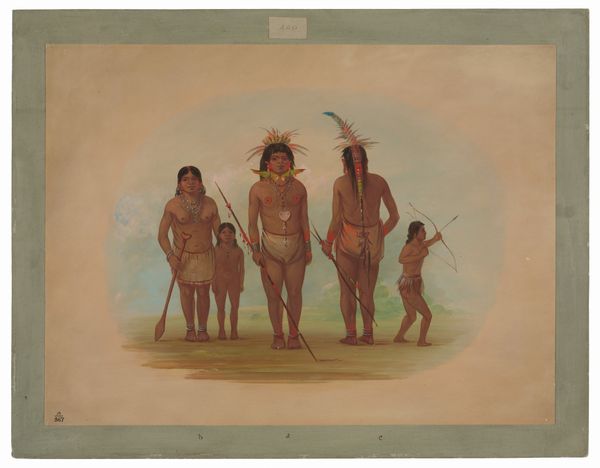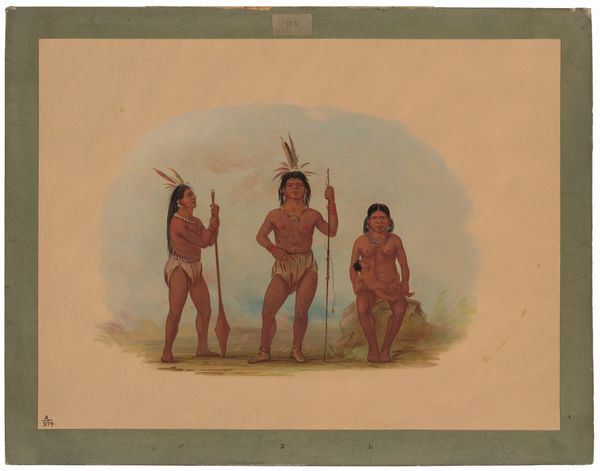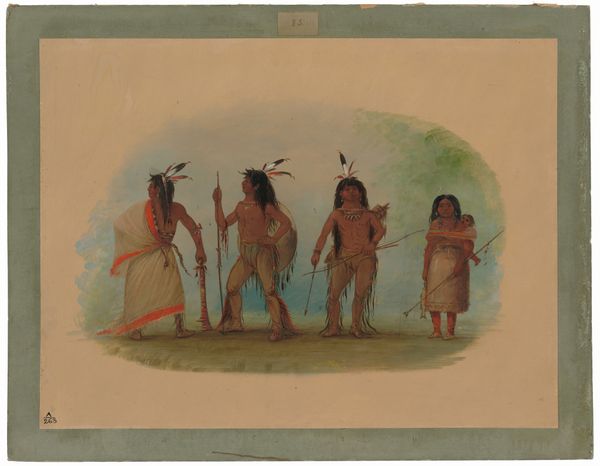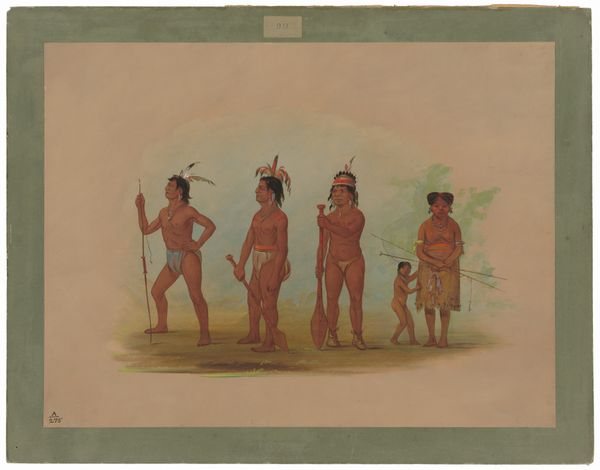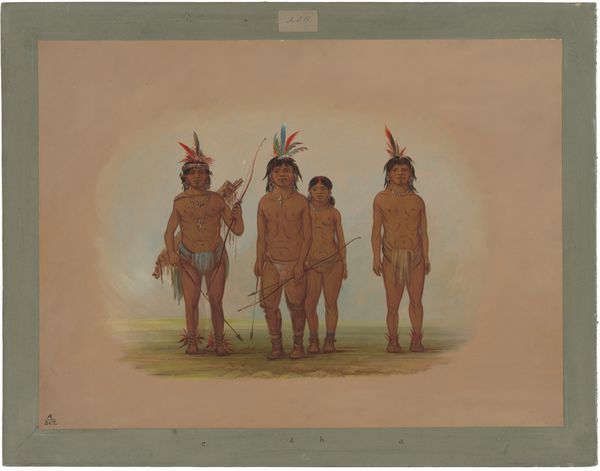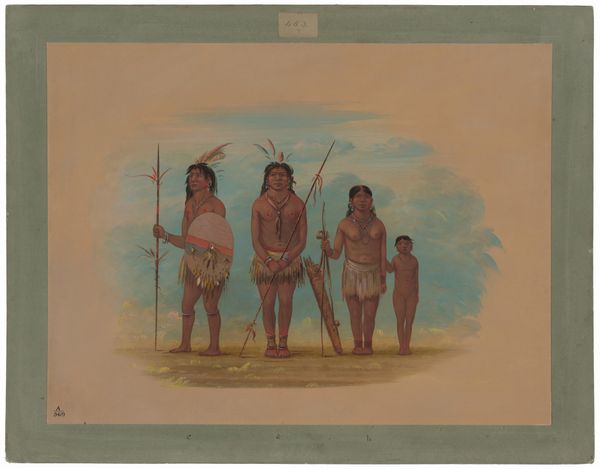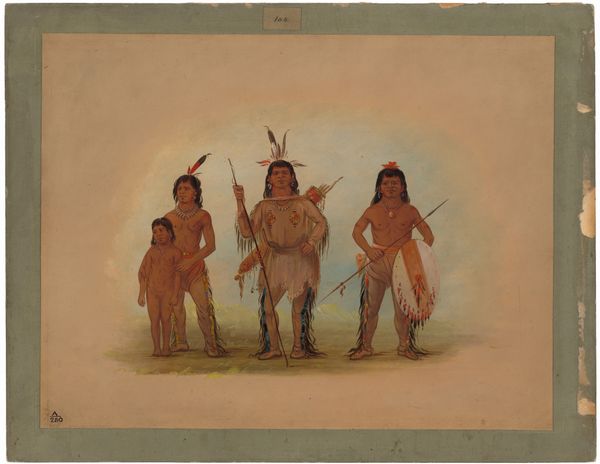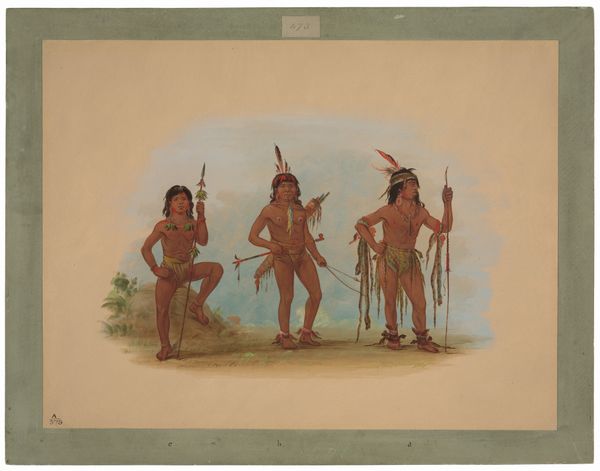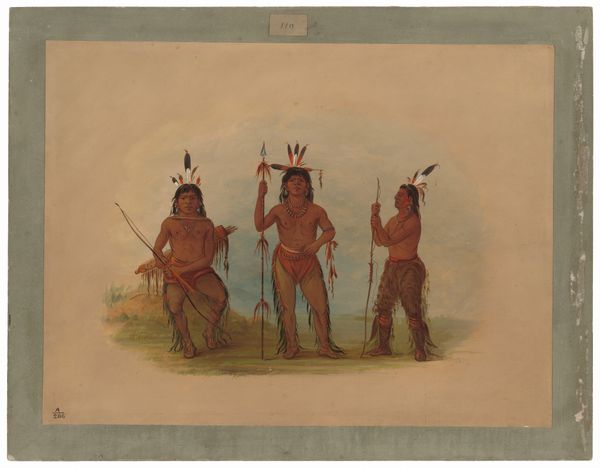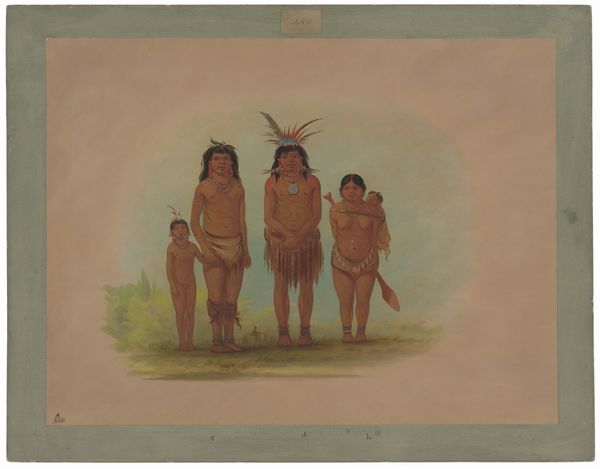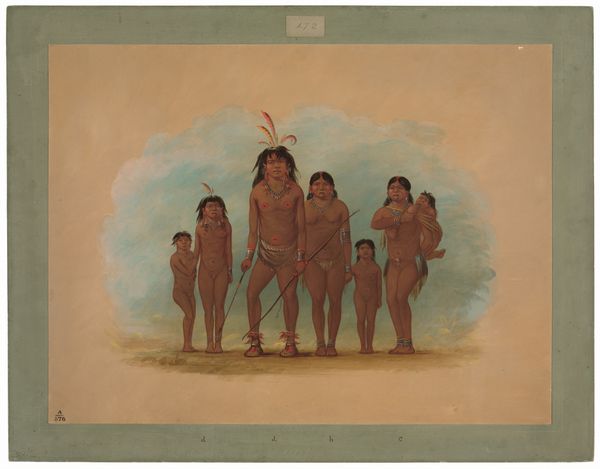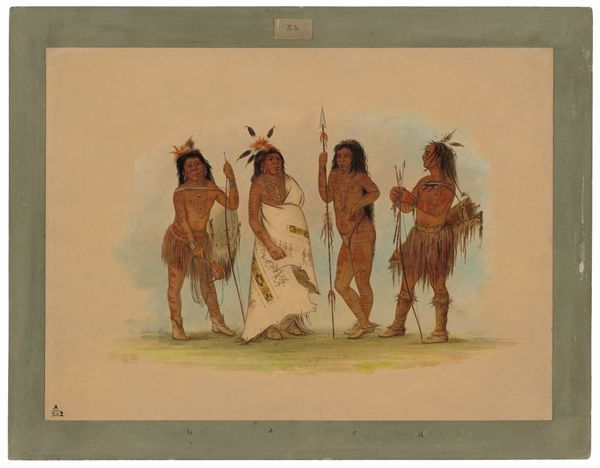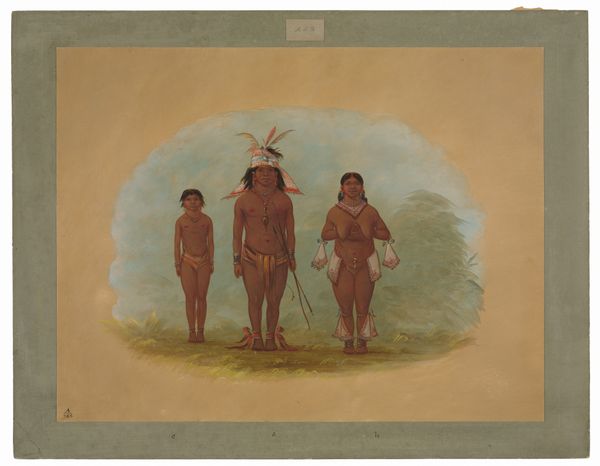
painting, gouache
#
portrait
#
water colours
#
painting
#
gouache
#
watercolour illustration
#
watercolor
Dimensions: overall: 46.7 x 62 cm (18 3/8 x 24 7/16 in.)
Copyright: National Gallery of Art: CC0 1.0
Curator: The watercolor before us, titled "Five Caribbe Indians," was created by George Catlin sometime between 1854 and 1869. It’s an interesting example of his work, documenting Indigenous peoples. Editor: My immediate impression is of a staged formality, like a carefully arranged tableau. The muted palette of watercolors gives it a gentle, almost melancholic air, but those are watercolor, seemingly inexpensive and convenient medium to transport to far regions of the world and allow a traveling artist to reproduce images from direct observation... Curator: Catlin was particularly fascinated by how cultures are expressed through adornment. Note the varied headdresses: feathers, shells, small animal parts. Each element carries meaning, representing status, achievements, or affiliations within their society. It’s a language written on the body. Editor: Right, but consider also the materials. The fact that Catlin chose watercolor implies certain limitations. It suggests a rapid mode of production, ideal for quickly capturing images but potentially sacrificing depth of detail. I am also thinking about the production of pigments. Curator: Precisely! Think about the deeper cultural narrative: this work acts as a historical record of encounters, reflecting Catlin's perceptions of these individuals at a moment of immense cultural transition. He saw himself as preserving their image, their spirit, for posterity. Editor: Preserving, or appropriating? It's hard to ignore the power dynamic inherent in the artist-sitter relationship, especially in a colonial context. The means of representation, the portability of watercolor allowing the making and transporting of many images, it’s all part of a much larger system of exchange and control. Curator: Yes, there are undeniably complicated aspects. The very act of portraying them in a ‘Western’ style is, to a degree, a form of translation, altering their essence, perhaps. Editor: This image, in its simplicity, becomes a document loaded with context, the social, political and cultural all mixing into the image of these five individuals. Curator: It serves as a poignant reflection of how images serve to compress and extend culture. Editor: Precisely. And on the economics of how it’s done. It really gives me a whole new respect for understanding history.
Comments
No comments
Be the first to comment and join the conversation on the ultimate creative platform.
